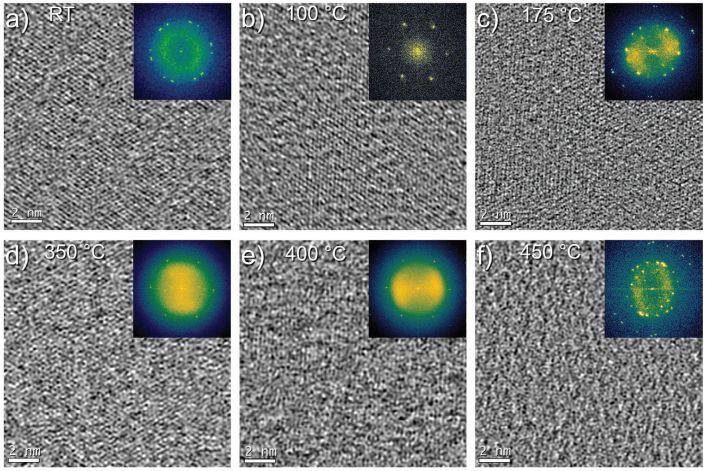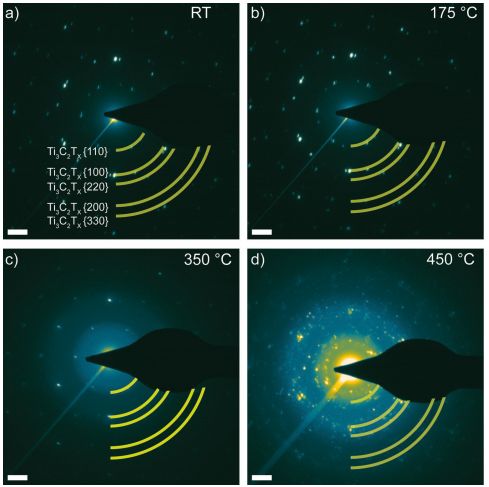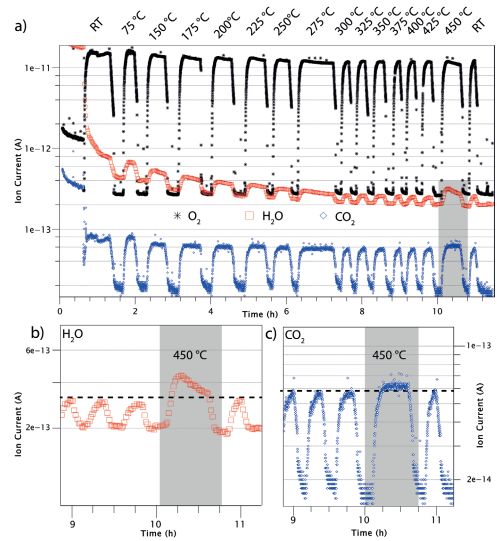How many oxygen on the surface of MXene? This AFM answers for you
QQ Academic Group: 1092348845
Detailed
The surface of two-dimensional nanomaterials has very high activity, which is conducive to the study of electrochemical energy storage and catalysis, such as supercapacitors and hydrogen evolution reactions. As a large family of two-dimensional nanomaterials, MXene has a wide range of types. Two-dimensional nanomaterials with different properties can be obtained by adjusting its structure, composition and surface functional groups. MXene is represented by the general formula Mn+1XnTx, which is obtained by selectively etching the A layer in Mn+1AXn (n = 1−3), where M represents several transition metals, A represents an element of group 13 or 14, X On behalf of carbon or nitrogen, T represents surface functional groups, generally O, OH and F. Since these functional groups are mainly derived from etching agents, it is difficult to control their composition, so the existing research on adjusting the surface functional groups of MXene has not received much attention. However, existing theories predict that oxygen-containing groups are beneficial to improve the energy storage and catalytic performance of materials. Therefore, it is very meaningful to take measures to make all the functional groups on the surface of MXene are oxygen groups. The oxidation behavior and degradation mechanism of MXene are basic issues that need to be explored.
Professor Per O. Å. Persson of Linköping University in Sweden and others recently reported a method to maximize the saturation of oxygen-containing functional groups on the surface of MXene. The research results were published on "Advanced Functional Materials" under the title "How Much Oxygen Can a MXene Surface Take Before It Breaks" (see the original link after the article).

【Graphic Analysis】

Figure 1. Planar HRTEM images obtained from 1 to 3 Ti3C2Tx stacked single sheets after 0.5 hours of exposure to 2 mbar oxygen.

Figure 2. EELS spectrum of the C-K and O-K edges of Ti3C2Tx flakes exposed to 2 mbar oxygen for 0.5 hours. C/Ti/O data obtained by quantitative analysis of EELS at room temperature to 450°C.

Figure 3. ED image obtained from Ti3C2Tx wafers after exposure to 2 mbar oxygen for 0.5 hours in vacuum. The scale is 2 (1/nm).

Figure 4. a) RGA spectra of O2, H2O and CO2 obtained at room temperature to 450°C when exposed to 2 mbar oxygen. The inset shows a magnified view of b) H2O and c) CO2, especially in the 450°C temperature window (represented by the shaded area). The dashed line indicates the maximum current before cycling at 450°C.
Analysis: The author first used a defluorination process to remove the fluorine on the surface of MXene, retaining the original oxygen groups, and then exposed MXene to a controlled oxygen environment, making its surface functional groups only O. With the increase of exposure time and temperature in the oxygen environment, the surface oxygen content of MXene will be supersaturated (x>2), which is very meaningful and has not been reported before, and it is expected that the increase in oxygen content will increase A large number of hydrogen active sites. After prolonged exposure, MXene will decompose, causing hydrolysis and absorption to form two-dimensional amorphous Ti(C, O)2 and TiO2 nanoparticles. At 450°C, the MXene structure disappears, but the properties of the two-dimensional material are retained. After fluorine removal, the O content at the beginning of the experiment was equivalent to 0.8 O atoms per Ti atom surface (x = 1.6). The surface is saturated with O at 100°C (x = 2), and the oxygen content is relatively stable, until the temperature reaches 250°C a sudden increase (x> 3), which means that the surface is supersaturated, that is, 1.5 O atoms are adsorbed on each titanium atom . From then on, the composition became relatively stable, and increased slightly at 400°C, reaching 1.74 O atoms per Ti atom adsorbed on the surface (x = 3.48). At 450℃, the carbon content is greatly reduced, and the Ti:O content is close to TiO2.
【to sum up】
The author reported a method that can maximize the saturation of the oxygen content on the surface of MXene. The increase in oxygen content is of great significance to the fields of electrochemical energy storage and catalysis. Under the maintenance of the MXene sheet structure, the oxygen content can reach 3.5.
The Frontier of Polymer Science has established "MXene", add the editor as a friend (WeChat ID: polymer-xiang, please note: name-unit-title-MXene), and invite to join the group.
Full text link:
https://www.onlinelibrary.wiley.com/doi/10.1002/adfm.201909005
Source: Frontiers of Polymer Science
This information is from the Internet for academic exchanges. If there is any infringement, please contact us and delete it immediately
- Previous: Do you need hemodialys
- Next: MXene breakthrough: Na


 mxene academic
mxene academic
